 By Tim Parr
By Tim Parr
August 4th, 2021. My time in Chisasibi came to an end after a week. Mid-afternoon, I was back on a Dash 8-300 and bound for Val D’Or, Québec. I spent the night in Val D’Or for the purpose of meeting with a lawyer who works for the Cree Justice and Correctional Services Department and knows a lot about the Gladue process the next day.
Upon arrival, I took to the streets to explore. A particular scene struck me while I walked Val D’Or. Cadets, young officers in training, were handing out tickets to Indigenous people gathered in the parks, seemingly for loitering or vagrancy.
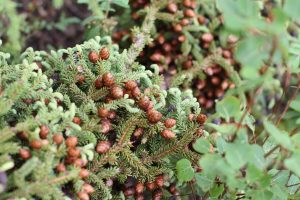
With so much talk of reconciliation, it is strange that future law enforcement agents should continue to be a part of such a relationship. Later, I mentioned this in passing to one of my supervisors who commented specifically on the practice of “Moonlighting,” wherein the police pick up an Indigenous person (most likely Cree), who is perhaps homeless or disturbing the peace, and brings them far outside the city by car and drops them off. In the winter, the consequences are dire. People freeze to death.
Travelling approximately four hours by car from Val D’Or to Chibougamau the scarcity of the land is readily observable. Unprepared, the land can be cruel. Communities are far from one another. Moonlighting is an example of how institutional racism manifests, how deeply it is entrenched and how problematic the Québec government’s reluctance to acknowledge systemic racism is, as well.
The lingering effects of colonialism were palpable in Val D’Or. The Cree are punished by the state of Québec even though they were dispossessed of their land.
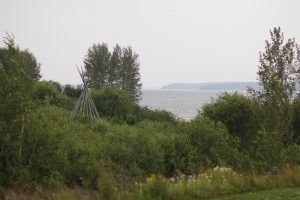
One solution to Moonlighting is to diversify the local police force. Increase the number of Cree officers. However, my supervisor explained the challenges to this. Certain physical requirements exist which prevent Crees from becoming police officers. The result is outsiders policing the communities, which presents its own challenges. Notable is the ability to understand cultural differences.
During my two weeks up North, I had the opportunity to visit three of the nine communities (Chisasibi, Mistissini and Oujé-Bougoumou) in Eeyou Istchee territory. The level of difference is subtle but significant. Chisasibi is pronounced differently in the Southern communities than it is up North. Dialects vary as do techniques for cooking and hunting. From my understanding, this seems to be influenced in part by the differences between coastal and in-land lifestyles; it would only be by spending more time in the communities that one could truly begin to appreciate and understand the complexities of this. The takeaway is that police officers, especially if they are outsiders, need to be trained to be cognizant of cultural difference or understand what scholars refer to as, cultural relativism.
Culture must be understood within its own localized setting or context. On its own terms. For instance, healthcare providers are increasingly obligated to undergo training which sensitizes them to these issues. Patients are gradually feeling the effects of this tailored approach. This gradually repairs the damage done to visible minority populations. These measures should extend to neutral agents of the justice system. The roots of prejudicial attitudes require exposure and redress.
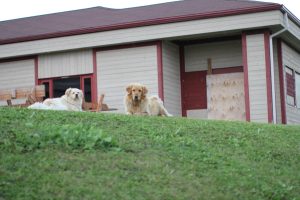
From Val D’Or, I left for Mistissini, passing through Chibougamau. I spent the remainder of my time North at the Lakeview Hotel, overlooking Lake Mistissini. I try not to romanticize the land, but Lake Mistissini is a treasure.
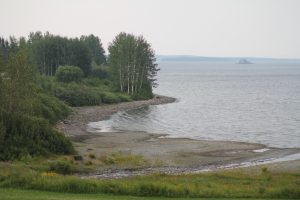
It is the largest source (lake) of fresh water in Québec and is filled with Northern Pike and Walleye. It is a festive place. While I was at the hotel, the Cree celebrated Mistissini and engaged in portages and canoe rallies and other physical feats. Fishing competitions were going on. One young woman apparently won $20 000 for catching a pike.
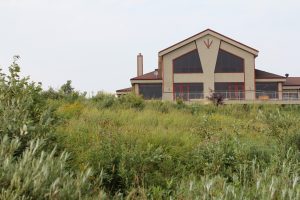
The Cree were incredibly hospitable. Very generous and kind. I made friends and was invited to have supper with a family twice. The food was delicious. I tried goose for the first time, a meal which holds an important place in Cree culture.

It was good (perhaps comparable to turkey) and came with the caveat, “watch out for the pellets.” These are the quiet, fleeting moments that one remembers and cherishes.

The Gladue process is confidential, so I will avoid going into detail on this subject. My weekdays in Mistissini were spent working out of the Justice building, conducting research and completing preparatory tasks. The Justice buildings, like several of the other buildings in the communities, are freshly renovated. Being in the buildings gave me the opportunity to understand how the Justice and Corrections Department operates (e.g., the people involved and their roles). I communicated with several of the employees to develop a healing plan for my client. This also involved contacting Cree Mental Health Services (Maanuuhiikuu).
Having spent six nights in Mistissini, my trip North was winding down. On my last day at the office, my supervisor asked me if I would participate in a podcast with him. I said, yes (my first podcast). The questions pertained to my experience at law school, in the North and my thoughts on Gladue. It should be available in the coming weeks.
Prior to boarding the Dash 8-3000 for Montreal from Chibougamau, I made a quick visit to Oujé-Bougoumou, also known as the place where people gather. I was encouraged to visit the Aanischaaukamikw Cree Cultural Institute.

At the institute, the law student in me was drawn to what appears to be the original James Bay and Northern Québec Agreement (JBNQA), signed in 1975 and displayed as one of the exhibits. During my first conversation with my supervisor, he pointed to the document’s importance for the Cree and noted that it is constitutionally protected.
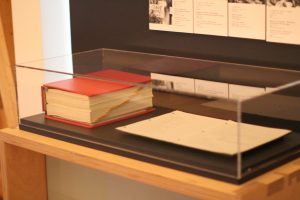
Section 18 of the JBNQA is a particularly relevant section. It concerns the administration of justice and sets out inter alia that “[T]he Minister of Justice of Québec shall not effect any changes to the territorial limits of the “judicial district of Abitibi” without consulting the local authorities of Cree communities that would be affected by any such changes” (s 18.0.4) and the “Justice of the peace, preferably Crees, are appointed in order to deal with infractions to by-laws adopted by Cree local authorities and other offences contemplated in section 107 of the Indian Act. These appointments are subject to the approval of the interested Cree local authority” (s 18.0.9). S 18 has many purposes.
In one sense, s 18 is designed to ensure that Crees are involved in the administration of justice and that the administration of justice is consistent with the customs, usages and ways of life of the Cree.
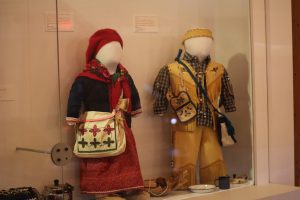
The JBNQA is a crucial source of legal rights for the Cree, but for some it may be interpreted or perceived as a form of compromise. The Crees are not wholly independent of the Québec and Canadian courts. Western norms encroach upon the Cree approach to justice. The foreseeable future has the Cree pursuing greater independence. Federal and provincial courts will do well to respect this direction, a vital aspect of meaningful reconciliation.
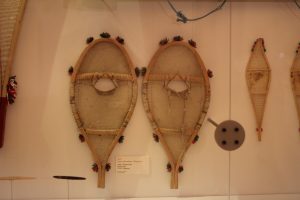
My time in the North and working remotely for the Cree was rewarding and challenging. I am grateful to all the people who helped me over the summer and the Human Rights Internship Program for providing me with the opportunity. I hope I can take what I learnt over the summer and apply it in the future to help those in need. I would return North in a heartbeat.
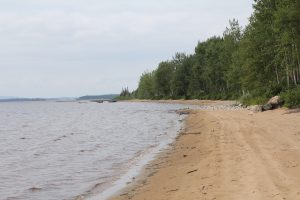
Miigwech,
Tim Parr
SECONDARY MATERIALS
Dell’Osso, Daniel. ”Cultural Sensitivity in Healthcare: The New Modern Day Medicine” (2016) Senior Thesis 58 at 6.
